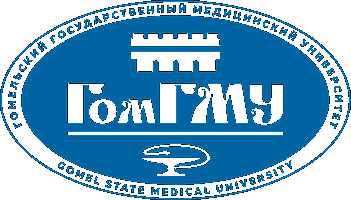| dc.contributor.author | Скуратов, А. Г. | |
| dc.contributor.author | Лызиков, А. Н. | |
| dc.contributor.author | Мицура, В. М. | |
| dc.date.accessioned | 2022-05-25T06:25:09Z | |
| dc.date.available | 2022-05-25T06:25:09Z | |
| dc.date.issued | 2022 | |
| dc.identifier.citation | Скуратов, А. Г. Оценка тяжести портальной гипертензии при циррозе печени / А. Г. Скуратов, А. Н. Лызиков, В. М. Мицура // Новости хирургии. – 2022. – Т. 30, № 1. – С. 20 –27. | ru_RU |
| dc.identifier.uri | http://elib.gsmu.by/handle/GomSMU/11238 | |
| dc.description.abstract | Цель. Разработка метода неинвазивной диагностики для оценки тяжести портальной гипертензии
при циррозе печени.
Материал и методы. Для выявления диагностически значимых показателей проведен статистический
анализ данных лабораторных и инструментальных методов исследования 60 пациентов с циррозом печени. Были оценены показатели общего и биохимического анализов крови, коагулограммы, общего анализа
мочи, концентрации интерлейкина-6 (ИЛ-6), матриксных металлопротеиназ 1 и 9 (ММП-1, ММП-9),
тканевого ингибитора матриксной металлопротеиназы 1 (ТИМП-1), фактора роста гепатоцитов (HGF).
Проведено ультразвуковое исследование органов брюшной полости, фиброэзофагогастродуоденоскопия
(ФЭГДС). Рассчитан индекс отношения количества тромбоцитов крови (N×109
/л) к поперечному размеру
(Д) селезенки в миллиметрах (PSR – Plateletcount to Spleendiameter Ratio): PSR=NТр/Д селезенки.
Результаты. Диагностически значимыми оказались следующие показатели (представлены прогностические значения на основе ROC-анализа): концентрации в крови интерлейкина-6 (>19,9 пг/мл),
матриксной металлопротеиназы-1 (>8,06 нг/мл), холестерина (≤4,5 ммоль/л), диаметра воротной вены
(>13 мм), PSR (≤1,89). Разработан метод диагностики портальной гипертензии при циррозе печени, основанный на балльной оценке комплекса лабораторных и инструментальных критериев (AUC=0,931;
p<0,001). Метод может быть использован в комплексе медицинских услуг, направленных на диагностику
тяжести портальной гипертензии на фоне цирроза печени, а также на медицинскую профилактику жизнеугрожающих осложнений заболевания.
Заключение. Разработанный метод позволяет выявлять пациентов с «тяжелой» формой портальной
гипертензии, рекомендовать проведение им внеплановой ФЭГДС с эндоскопической оценкой риска кровотечения и проведения профилактических и лечебных процедур. При выявлении низкой вероятности
«тяжелой» формы ПГ следует воздержаться от ФЭГДС при наличии у пациента абсолютных или относительных противопоказаний к использованию данного диагностического метода.
Метод может быть использован в комплексе медицинских услуг, направленных на диагностику тяжести портальной гипертензии на фоне цирроза печени. | ru_RU |
| dc.description.abstract | Objective. Development of a non-invasive assessing diagnostic and severity grading accuracy of portal
hypertension in cirrhosis of the liver.
Methods. To identify diagnostically significant indicators, a statistical analysis of the data of laboratory and
instrumental diagnostics was carried out in 60 patients with liver cirrhosis. The following biochemical indicators
were determined: general and biochemical blood tests, coagulogram, general urine analysis; the level of interleukin-6
(IL-6), matrix metalloproteinases 1 and 9 (MMP-1, MMP-9), tissue inhibitor of matrix metalloproteinase 1 (TIMP1), hepatocyte growth factor (HGF); abdominal ultrasound examination, esophagogastroscopy. The index of the
ratio of the number of blood platelets (N×109
/ L) to the transverse size (D) of the spleen in millimeters (PSR -
Platelet count to Spleen diameter Ratio) was calculated: PSR = NTr / D spleen.
Results. The following indicators turned out to be diagnostically significant (predictive values based on ROC
analysis are presented): blood levels of IL-6 (>19.9 pg/ml), MMP-1 (>8.06 ng/ml), cholesterol (≤4,5mmol/L),
portal vein diameter (>13 mm), PSR (≤1.89). Diagnostic methods for cirrhosis and portal hypertension was
developed, based on a point assessment of a set of laboratory and instrumental criteria (AUC = 0.931; p <0.001).
The method can be used in a complex of medical services aimed at diagnosis of portal hypertension severity in
patients with cirrhosis of the liver, as well as medical prevention of life-threatening complications of the disease.
Conclusion. The developed method makes it possible to identify patients with a "severe" form of portal
hypertension, to recommend an unscheduled FEGDS with an endoscopic assessment of the risk of bleeding, and to
carry out preventive and therapeutic procedures. If a low probability of a “severe” form of PH is identified, FEGDS
should be refrained from if the patient has absolute or relative contraindications to the use of this diagnostic method.
The method can be used in a complex of medical services aimed at diagnosing the severity of portal
hypertension against the background of liver cirrhosis. | |
| dc.language.iso | ru | ru_RU |
| dc.publisher | Новости хирургии | |
| dc.subject | цирроз печени | ru_RU |
| dc.subject | портальная гипертензия | ru_RU |
| dc.subject | варикозное расширение вен пищевода | ru_RU |
| dc.subject | диагностика | ru_RU |
| dc.subject | оценка тяжести заболевания | ru_RU |
| dc.subject | liver cirrhosis | ru_RU |
| dc.subject | portal hypertension | ru_RU |
| dc.subject | gastroesophageal varices | ru_RU |
| dc.subject | diagnosis of the disease severity | ru_RU |
| dc.title | Оценка тяжести портальной гипертензии при циррозе печени | ru_RU |
| dc.type | Article | ru_RU |
| dc.identifier.doi | https://dx.doi.org/10.18484/2305-0047.2022.1.20 | |
